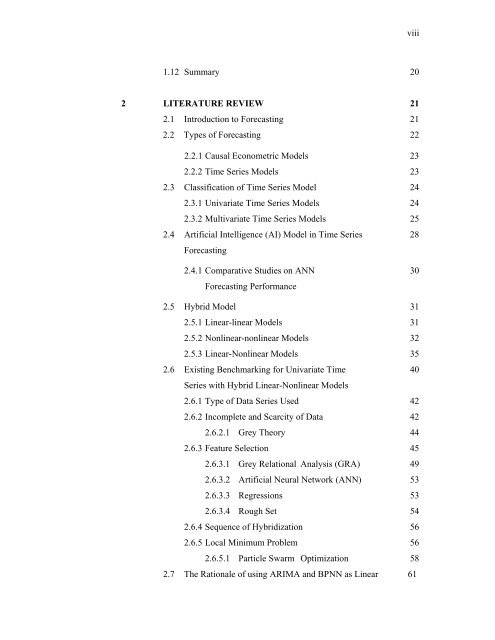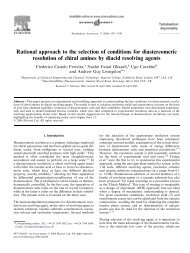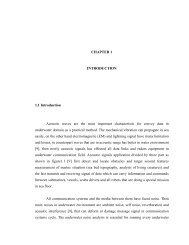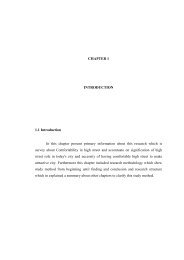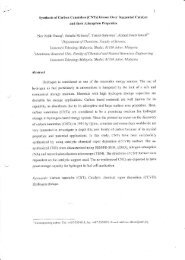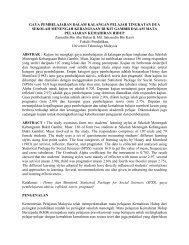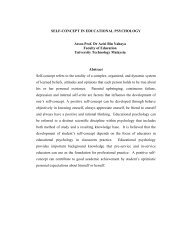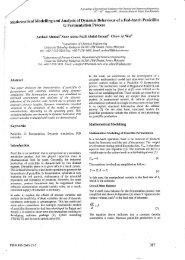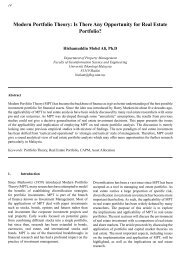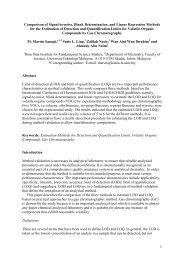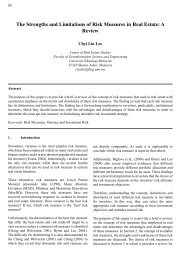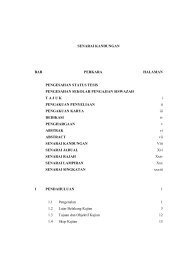vii TABLE OF CONTENTS CHAPTER TITLE PAGE DECLARATION ii ...
vii TABLE OF CONTENTS CHAPTER TITLE PAGE DECLARATION ii ...
vii TABLE OF CONTENTS CHAPTER TITLE PAGE DECLARATION ii ...
Create successful ePaper yourself
Turn your PDF publications into a flip-book with our unique Google optimized e-Paper software.
<strong>v<strong>ii</strong></strong>i<br />
1.12 Summary 20<br />
2 LITERATURE REVIEW 21<br />
2.1 Introduction to Forecasting 21<br />
2.2 Types of Forecasting 22<br />
2.2.1 Causal Econometric Models 23<br />
2.2.2 Time Series Models 23<br />
2.3 Classification of Time Series Model 24<br />
2.3.1 Univariate Time Series Models 24<br />
2.3.2 Multivariate Time Series Models 25<br />
2.4 Artificial Intelligence (AI) Model in Time Series 28<br />
Forecasting<br />
2.4.1 Comparative Studies on ANN 30<br />
Forecasting Performance <br />
2.5 Hybrid Model 31<br />
2.5.1 Linear-linear Models 31<br />
2.5.2 Nonlinear-nonlinear Models 32<br />
2.5.3 Linear-Nonlinear Models 35<br />
2.6 Existing Benchmarking for Univariate Time<br />
Series with Hybrid Linear-Nonlinear Models<br />
40<br />
2.6.1 Type of Data Series Used 42<br />
2.6.2 Incomplete and Scarcity of Data 42<br />
2.6.2.1 Grey Theory 44<br />
2.6.3 Feature Selection 45<br />
2.6.3.1 Grey Relational Analysis (GRA) 49<br />
2.6.3.2 Artificial Neural Network (ANN) 53<br />
2.6.3.3 Regressions 53<br />
2.6.3.4 Rough Set 54<br />
2.6.4 Sequence of Hybridization 56<br />
2.6.5 Local Minimum Problem 56<br />
2.6.5.1 Particle Swarm Optimization 58<br />
2.7 The Rationale of using ARIMA and BPNN as Linear 61


